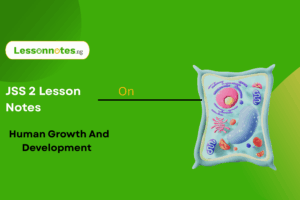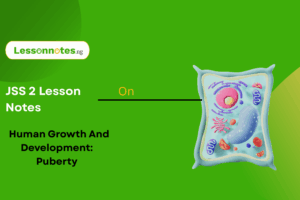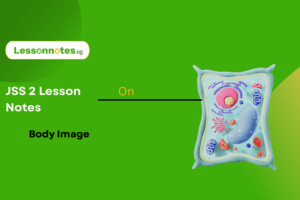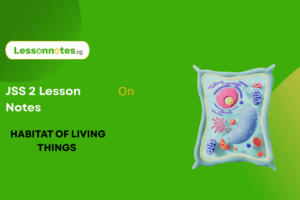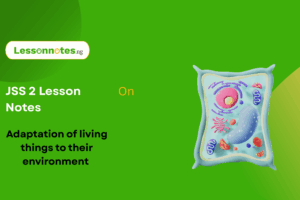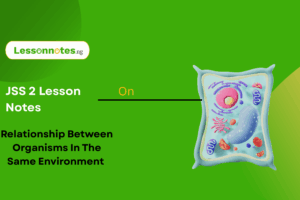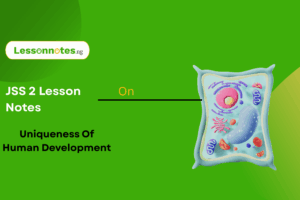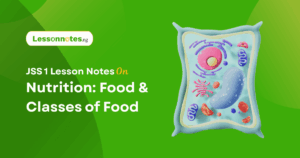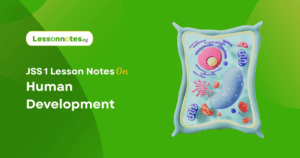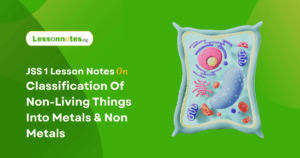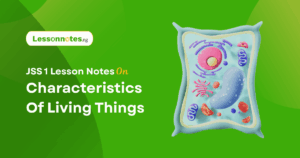Living & Non-Living Things 1 JSS1 Basic Science Lesson Note
Download Lesson NoteTopic: Living & Non-Living Things 1
LIVING AND NONLIVING THINGS
MATTER
Matter is anything that has mass and occupies space. Examples are stone, sand, water, biro, air, etc. All matter is made up of tiny particles called atoms.
PROPERTIES OF MATTER
- Matter occupies space
- Matter has mass
- Matter is made up of particles
- It exists in solids, liquids, or gasses
CLASSIFICATION OF MATTER
Matter can be classified into two major types
- Living Matter: This refers to things that have life in them e.g. goat, man, lion, plant, etc.
- Non-Living Matter: This refers to things that have no life in them e.g. stone, water, chair, book, etc.
STATES OF MATTER
Matter exists in three main states. These are:
- Solid state
- Liquid state
- Gaseous state
Solid State
In the solid state, the particles are held in a fixed position. They are arranged regularly and hence have a fixed or definite shape. The particles are held together by a strong force of attraction. Examples are wood, stone, nails, books, chairs, etc.
Liquid State
In the liquid State, the particles are not in a fixed position like the solids. The particles can move about but are still restricted by the wall of the container. The force of attraction between the particles is weak, hence, liquids flow. Liquid takes the shape of the container. Examples are water, petrol, groundnut oil, etc.
Gaseous State
In the gaseous state, the particles are wide apart and move about easily at very high speeds. This makes it easy to compress a large volume of gas into a small volume. Examples are air, oxygen, nitrogen, Carbon dioxide, etc.
CHANGE OF STATE
This is the process by which matter changes from solid to liquid, liquid to gas, or vice versa.
Evaporation
This is the process by which a substance in the liquid state changes to gas or vapour. This takes place at normal atmospheric conditions and any temperature.
Condensation
This is the change from gas to liquid
Boiling
This is the rapid vaporization of a liquid which occurs when a liquid is heated to its boiling point. It appears at a given temperature. The temperature at which liquid boils is called the boiling point. The boiling point of water is 100oc.
Melting
This is the process by which a substance changes from a solid state to a liquid state with the application of heat. The particular temperature at which the solid meets is called melting point.
CLASSWORK
- What is matter?
- How many states of matter do we have? Mention them
- Mention three examples each under the three states of matter


